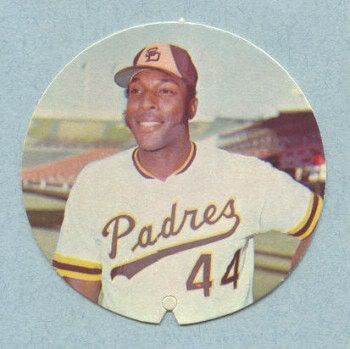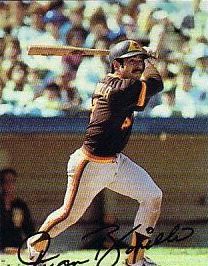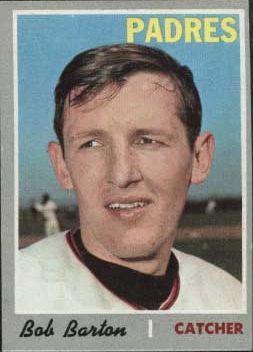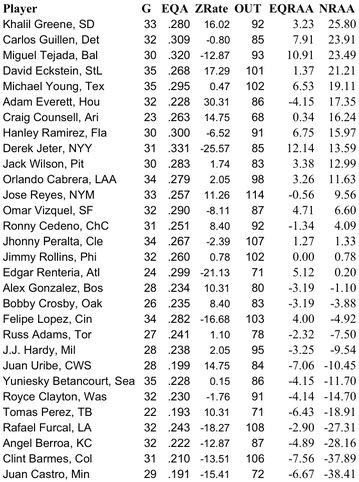Top 100 San Diego Padres: #83 Willie McCovey

WILLIE LEE MCCOVEY | 1B | 1974-1976 | CAREER
STATS
Back in the early 70’s, I made a deal with my grandmother. If my favorite Padre hit a home run while we were at the game, she would give me a hundred dollar bill. We shook on it and everything. Overhearing this, my little brother requested the same deal. My grandmother cracked up, then counter-offered a single dollar.
See, my favorite Padre was Enzo Hernandez. My little brother’s favorite?
Willie McCovey.
Even in the fading twilight of his career, Willie McCovey meant something to San Diego. He was the first genuine star to come here, and to many fans he was the first real indication that the Padres played in the major leagues.
Willie didn’t do much by his own standards in his three years as a Friar. His highest average was .253, and he hit only 52 homers in the three years. But to people who hadn’t been paying attention to Nate Colbert and Clay Kirby, McCovey’s presence meant that we really were “big league”. To my lil’ brother, Willie McCovey was better than a ride to the community swimming pool at Gillespie Field.
Willie had swagger, Willie had muscle, and when Willie hit the ball it went a long way. McCovey wasn’t quite the great player he had been in San Francisco, but it didn’t matter. It wasn’t like the team was actually going to win. But McCovey commanded respect.
Having Willie here affected the way the Padres were treated by the rest of the league, and especially by the east coast media. It meant that they would actually cover our games. Kirby and Colbert should have warranted that, but they didn’t.
Because we had Willie McCovey, Randy Jones and Dave Winfield got noticed more quickly.
Oh, there were other things going on in the year McCovey became a Padre. Ray Kroc was the new owner and he was behind the trade to acquire a name-ballplayer. The ballclub had already been packed to move to Washington D.C. But in McCovey’s first year the Padres drew a million fans for the first time, despite a 60-102 record.
Willie shouldn’t get all the credit for that. Indeed, the majority of it should go to Ray Kroc. Promising rookies Randy Jones and Dave Winfield didn’t hurt, either. Nor did established veterans Matty Alou and Bobby Tolan. The Padres looked like a major league team, on paper anyway.
But there was no doubt who the big name in the mix was. Although Jones and Winfield by 1976 had eclipsed McCovey’s star enough that he was traded to the Oakland A’s, Willie McCovey was the first big name acquisition that let this town know we had a major league team.
By the way, I never did collect any money from my grandmother. My brother ended up with about ten bucks over the next few years. Guess he got the best of that deal.












